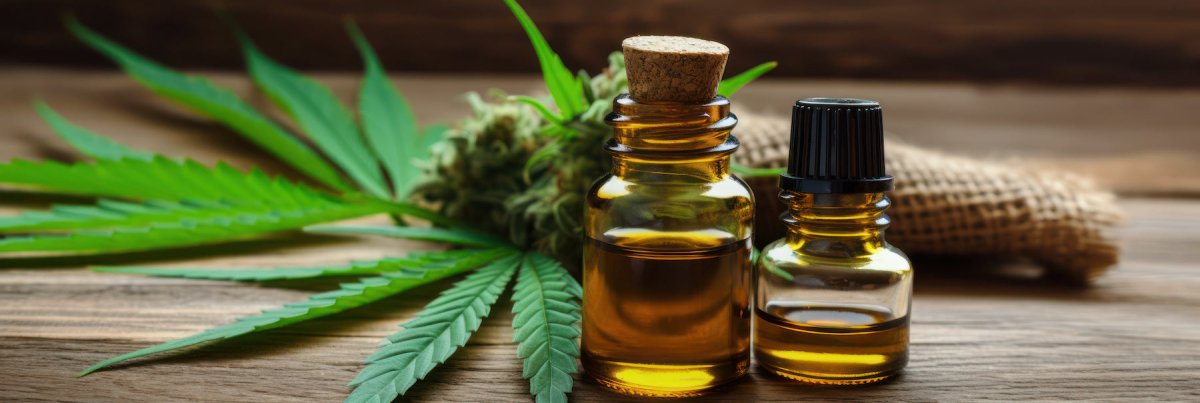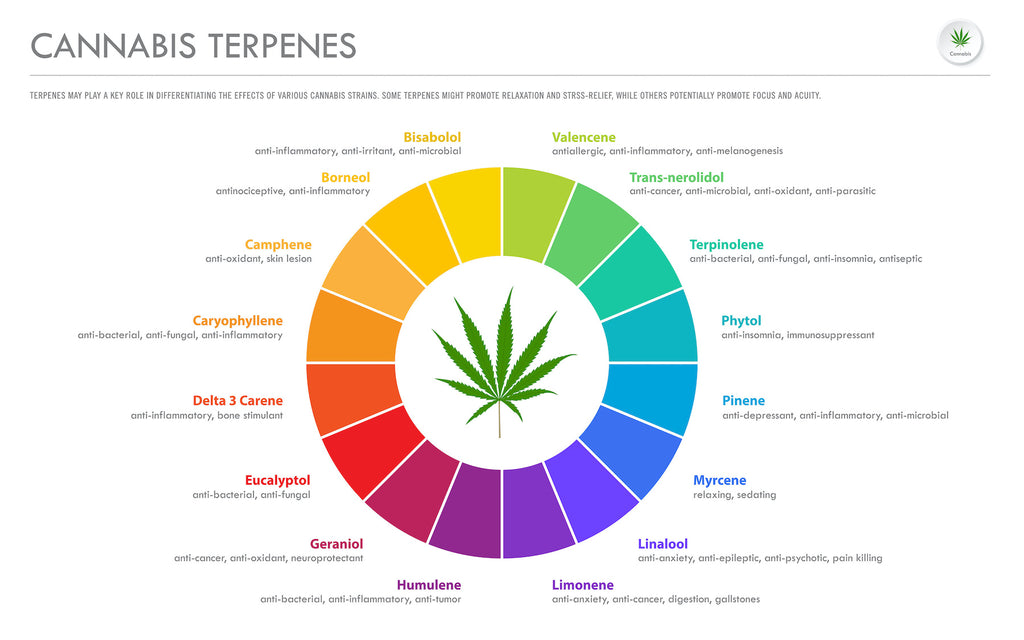Recent posts
-

-
 What Are THCa Diamonds?October 14, 2025
What Are THCa Diamonds?October 14, 2025 -
 Delta 9 Gummies GuideOctober 8, 2025
Delta 9 Gummies GuideOctober 8, 2025 -
 Head High vs Body High: A Guide to Cannabis EffectsOctober 1, 2025
Head High vs Body High: A Guide to Cannabis EffectsOctober 1, 2025 -
 What is THCA Crumble?September 22, 2025
What is THCA Crumble?September 22, 2025 -
 10 Ways to Elevate Self-Care Awareness MonthSeptember 14, 2025
10 Ways to Elevate Self-Care Awareness MonthSeptember 14, 2025

What is The Entourage Effect?
By Zero Point
Table of Contents
Introduction to The Entourage Effect
The world of cannabis is as complex as it is fascinating, brimming with a rich tapestry of compounds that weave together to produce a myriad of effects on the human body and mind. Among these, cannabinoids like THC and CBD have taken center stage in public discourse, hailed for their therapeutic potentials and psychoactive properties. However, to understand the true essence of cannabis, one must delve deeper into a phenomenon known as The Entourage Effect.
The Entourage Effect is a term that has piqued the interest of scientists, medical professionals, and cannabis enthusiasts alike. It refers to the synergistic interaction between cannabinoids, terpenes, and other compounds found in cannabis, which are believed to enhance the overall effects of the plant. Unlike the isolated impact of its individual components, the Entourage Effect suggests that "the whole is greater than the sum of its parts." This concept not only challenges our understanding of how cannabis interacts with the human body but also opens new avenues for research and application in both medicinal and recreational contexts.
Understanding the Entourage Effect is crucial for anyone looking to grasp the full potential of cannabis. It explains why different strains of cannabis, each with a unique chemical profile, can produce distinct effects. It also sheds light on why whole-plant extracts might offer more significant benefits than isolated cannabinoids in certain medical treatments. The significance of the Entourage Effect extends beyond mere academic interest; it has real-world implications for how cannabis products are formulated, marketed, and used.
As we embark on this journey to explore the Entourage Effect, we will unravel the intricate web of interactions within the cannabis plant, examine scientific evidence supporting this phenomenon, and consider its implications for the future of cannabis use. Whether you are a medical professional, a cannabis connoisseur, or simply curious about the science behind the plant, understanding the Entourage Effect is essential for a well-rounded perspective on cannabis.
Background
The story of cannabis and its relationship with humanity stretches back thousands of years, woven into the fabric of various cultures for its medicinal, spiritual, and recreational uses. However, the scientific journey to understand its components and effects is relatively recent. This journey has led to the discovery of cannabinoids and terpenes, setting the stage for the groundbreaking concept known as the Entourage Effect.
The Historical Use of Cannabis
Cannabis has been utilized by civilizations across the globe, from ancient China, where it was prescribed for a multitude of ailments, to Egypt, India, and beyond. Its versatility and efficacy in treating a wide range of conditions made it a staple in traditional medicine. Despite its long history of use, it wasn't until the 20th century that scientists began to uncover the chemical secrets hidden within the plant.
The Discovery of Cannabinoids
The discovery of THC (tetrahydrocannabinol) in the 1960s marked a pivotal moment in cannabis research. THC was the first cannabinoid to be isolated, providing a chemical basis for the psychoactive effects of cannabis. This was soon followed by the identification of CBD (cannabidiol) and other cannabinoids, each contributing unique properties and effects. These discoveries were crucial in understanding how cannabis interacts with the human body, particularly through the endocannabinoid system—a network of receptors regulating various physiological processes.
Early Observations of Synergistic Effects
As research progressed, scientists observed that the effects of cannabis could not be fully explained by the action of individual cannabinoids. There were hints that these compounds worked better together than in isolation, a phenomenon that resonated with the holistic approach of traditional medicine. Early anecdotal evidence and preliminary studies suggested that the combination of cannabinoids and other plant compounds produced more significant therapeutic effects, laying the groundwork for the concept of the Entourage Effect.
The term "Entourage Effect" was first introduced by scientists S. Ben-Shabat and Raphael Mechoulam in 1998 to describe how various compounds in cannabis work together to produce a sum greater than their individual parts. This idea challenged the prevailing wisdom of the time, which favored the isolation of active ingredients in medicine. Instead, it highlighted the potential of whole-plant extracts in harnessing the full therapeutic potential of cannabis.
The exploration of the Entourage Effect represents a critical shift in our understanding of cannabis. It underscores the complexity of the plant and the need for a nuanced approach to its study and application. As we delve further into the intricacies of cannabinoids and terpenes, we pave the way for a deeper appreciation of cannabis's synergistic magic.

Understanding Cannabinoids
Cannabinoids are the cornerstone of cannabis's therapeutic and psychoactive properties. These chemical compounds interact with the human body's endocannabinoid system (ECS) in complex ways, influencing mood, pain sensation, appetite, and more. To fully appreciate the Entourage Effect, it's essential to understand the role and impact of these compounds.
The Role of Cannabinoids
Cannabinoids act on the body's ECS, a network of receptors spread throughout the brain and body. The ECS is involved in regulating various physiological processes, including pain, memory, mood, immune function, and appetite. Cannabinoids can either mimic endocannabinoids (produced naturally by the human body) or modulate the receptors' activity, leading to various effects.
THC and CBD: The Primary Cannabinoids
-
THC (Tetrahydrocannabinol): Known for its psychoactive effects, THC is the compound responsible for the "high" associated with cannabis. It binds to CB1 receptors in the brain, affecting mood, perception, and cognition. Beyond its recreational use, THC has therapeutic benefits, including pain relief, appetite stimulation, and nausea reduction.
-
CBD (Cannabidiol): Unlike THC, CBD does not produce a psychoactive effect. Instead, it's lauded for its potential health benefits without the intoxication. CBD interacts with the ECS differently, influencing the activity of various receptors and enzymes. It's known for its anti-inflammatory, analgesic, anti-anxiety, and seizure-suppressant properties.
Lesser-Known Cannabinoids
Beyond THC and CBD, the cannabis plant contains over 100 other cannabinoids, each with unique effects. Some of these include:
-
CBG (Cannabigerol): Often referred to as the "mother of all cannabinoids," as many cannabinoids are derived from its acidic form. It's known for its anti-inflammatory, antibacterial, and neuroprotective properties.
-
CBN (Cannabinol): Known for its sedative effects, CBN is often associated with aiding sleep. It's produced as THC ages and breaks down, explaining its increased presence in older cannabis.
-
CBC (Cannabichromene): This cannabinoid has shown potential in treating pain and inflammation, working synergistically with THC and CBD to enhance their effects.
Interaction with the Endocannabinoid System
The interaction of cannabinoids with the ECS is a key to understanding their effects on the human body. The ECS comprises two primary receptor types: CB1, primarily found in the brain and nervous system, and CB2, located in the peripheral organs and cells associated with the immune system. Cannabinoids can bind to these receptors, modulating the release of neurotransmitters and affecting bodily functions accordingly.
The complexity of these interactions underscores the potential of the Entourage Effect. It's not merely the presence of THC or CBD that defines the cannabis experience but the combined action of these and other cannabinoids, along with terpenes and flavonoids, that modulate and enhance the effects.
Exploring Cannabis Terpenes
Terpenes are aromatic compounds found in many plants, including cannabis, contributing to their fragrance and flavor. In cannabis, terpenes do more than just affect the plant's smell; they also play a crucial role in the plant's therapeutic effects and are central to the concept of the Entourage Effect.
The Role of Terpenes in Cannabis
In the natural world, terpenes serve various functions, including deterring herbivores, attracting pollinators, and protecting plants from environmental stresses. In cannabis, terpenes are thought to influence the plant's effects on the user, potentially enhancing the therapeutic properties of cannabinoids through synergistic interactions. This interaction suggests that terpenes could modify or amplify the effects of cannabinoids like THC and CBD, contributing to the complexity of the cannabis experience.
Common Terpenes Found in Cannabis
Cannabis plants contain a wide array of terpenes, each with unique effects. Some of the most commonly found terpenes in cannabis include:
-
Myrcene: Known for its earthy, musky aroma, myrcene is the most abundant terpene in cannabis. It is believed to enhance THC's potency and has anti-inflammatory and analgesic properties.
-
Limonene: Characterized by a citrusy smell, limonene is suggested to uplift the mood and provide stress relief. It's also associated with anti-anxiety and anti-depressant effects.
-
Pinene: With a distinct pine aroma, pinene is thought to counteract some of the adverse effects of THC, such as memory impairment. It also has anti-inflammatory and bronchodilator effects.
-
Linalool: Linalool has a floral scent and is believed to promote relaxation and calmness, making it beneficial for anxiety and stress relief. It also possesses anti-inflammatory and analgesic properties.
-
Caryophyllene: Unique among terpenes, caryophyllene can bind to CB2 receptors and is thought to have anti-inflammatory and analgesic effects. It has a spicy, peppery aroma.

Terpenes and Their Therapeutic Potential
The presence of these terpenes, along with cannabinoids, in cannabis contributes to the plant's overall therapeutic profile. For example, a strain high in both CBD and linalool might be particularly effective for anxiety relief, while one rich in THC and myrcene could be more suited for pain management. This highlights the importance of considering both cannabinoids and terpenes when selecting cannabis for specific therapeutic uses.
Research into terpenes is still in its early stages, but preliminary studies and anecdotal evidence suggest that they could significantly impact the efficacy of cannabis-based treatments. By modulating the effects of cannabinoids and contributing to the Entourage Effect, terpenes offer an additional layer of complexity to the medicinal use of cannabis.
The Science Behind the Entourage Effect
The Entourage Effect represents a paradigm shift in understanding cannabis's therapeutic and psychoactive potential. It suggests that cannabis is more than the sum of its parts, proposing a synergistic interaction between cannabinoids, terpenes, and other phytochemicals that enhances the plant's overall effect. This section examines the scientific evidence supporting the Entourage Effect, highlighting its significance in cannabis research and application.
Defining the Entourage Effect
The concept of the Entourage Effect was first introduced to articulate how the various compounds in cannabis work together, producing effects that differ from those of isolated cannabinoids. This synergy suggests that whole-plant cannabis preparations could offer more pronounced benefits than single-molecule extracts, due to the combined action of cannabinoids, terpenes, and other constituents.
Current Research and Studies
Research into the Entourage Effect is challenging, given the complexity of cannabis's chemical profile and the intricate interactions between its components. However, several studies have provided insights into how this phenomenon might operate:
- Studies have shown that terpenes such as myrcene, pinene, and limonene can influence the blood-brain barrier's permeability, potentially enhancing cannabinoid delivery to the brain.
- Clinical research indicates that CBD can mitigate some of THC's psychoactive effects, suggesting a balance that could be beneficial for medical users seeking the therapeutic effects of THC without its intense high.
- Investigations into the anti-inflammatory properties of cannabis have suggested that the combination of THC with certain terpenes might enhance the plant's anti-inflammatory effect beyond what THC or terpenes could achieve alone.
Despite these findings, the Entourage Effect remains a contentious topic within the scientific community, with some researchers cautioning against overstating its significance due to the current level of evidence. The complexity of cannabis's chemical makeup and the individual variability in human physiology make definitive conclusions challenging.
Challenges in Studying the Entourage Effect
One of the primary hurdles in researching the Entourage Effect is the difficulty of isolating and studying the interactions between the myriad compounds in cannabis. Additionally, regulatory restrictions on cannabis research in many regions have historically limited the scope and depth of studies. Despite these obstacles, the growing interest in cannabis's medical potential is driving new research, slowly unveiling the mechanisms behind the Entourage Effect.
The Implications of the Entourage Effect
Understanding the Entourage Effect has significant implications for both medical and recreational cannabis use. For medical users, it underscores the potential benefits of whole-plant extracts over isolated cannabinoids, suggesting that formulations preserving the plant's full chemical spectrum may offer enhanced therapeutic value. For recreational users, the Entourage Effect offers insights into why different strains produce distinct experiences, guiding choices based on desired effects.
The Entourage Effect also plays a crucial role in product development and formulation. Cannabis breeders and product manufacturers are increasingly focusing on creating strain-specific and whole-plant products designed to leverage the Entourage Effect for enhanced efficacy.
Practical Implications of the Entourage Effect
The concept of the Entourage Effect extends beyond theoretical discussions, influencing the practical aspects of cannabis cultivation, product development, and consumption. It has crucial implications for medical cannabis use, guides recreational users in selecting strains, and shapes the approach of manufacturers in creating cannabis products. This section explores these practical implications and how they impact the cannabis landscape.
For Medical Cannabis Use
The Entourage Effect holds significant promise for enhancing the therapeutic potential of cannabis. Patients and healthcare providers are increasingly considering the synergistic benefits of whole-plant cannabis extracts over single-molecule formulations. This shift is based on the premise that the full spectrum of cannabis compounds can offer more comprehensive relief for conditions such as chronic pain, epilepsy, and multiple sclerosis, among others.
- Personalized Medicine: The Entourage Effect underscores the importance of personalized medicine in cannabis therapy. Given the individual variability in response to cannabis compounds, patients might find more effective relief from specific combinations of cannabinoids and terpenes tailored to their condition and physiological makeup.
- Product Selection: For medical users, understanding the Entourage Effect can aid in selecting the most appropriate cannabis products. Products labeled as "full-spectrum" or "whole-plant" are designed to preserve the natural composition of cannabinoids and terpenes, potentially offering greater therapeutic benefits.
For Recreational Use
Recreational cannabis users also stand to benefit from an understanding of the Entourage Effect, as it can influence the choice of strains for desired effects. Whether seeking relaxation, euphoria, creativity, or relief from stress, users can make informed decisions based on the chemical profiles of different strains.
- Strain Selection: The presence of certain terpenes, in conjunction with cannabinoids, can alter the experience of a cannabis strain. For instance, a strain high in myrcene and THC might induce more sedative effects, while one rich in limonene and CBD could be more uplifting.
- Experience Enhancement: Recreational users interested in enhancing the sensory aspects of cannabis use, such as flavor and aroma, can explore the nuances of terpene profiles. This exploration can lead to a more personalized and enjoyable cannabis experience.
Role in Product Formulation and Branding
The Entourage Effect has a profound impact on the development and marketing of cannabis products. Producers are increasingly focused on creating products that leverage this phenomenon, differentiating themselves in a crowded market.
- Full-Spectrum Products: There's a growing demand for full-spectrum cannabis products that contain a wide range of cannabinoids and terpenes. These products are marketed based on their potential to provide a more robust and nuanced effect compared to isolates.
- Educational Marketing: Companies are also using the concept of the Entourage Effect as an educational tool, informing consumers about the benefits of whole-plant formulations. This approach helps build a more informed consumer base that can make choices aligned with their preferences and needs.
The practical implications of the Entourage Effect underscore its importance in the evolving landscape of cannabis use and industry. By fostering a deeper understanding of how cannabis compounds interact, the Entourage Effect not only enhances the therapeutic and recreational use of cannabis but also drives innovation in product development.
Future Directions
The exploration of the Entourage Effect is at a fascinating crossroads, with emerging research, changing legal landscapes, and an evolving public perception guiding its journey. As we delve deeper into the intricacies of cannabis and its myriad interactions within the human body, the future promises a broader understanding and acceptance of the Entourage Effect's potential. This section highlights the key areas of focus that will shape the future of cannabis use and research.
Ongoing Research and Unanswered Questions
The scientific community continues to untangle the complex web of interactions that define the Entourage Effect. Ongoing studies aim to elucidate the specific mechanisms through which cannabinoids and terpenes interact, seeking to quantify their synergistic impacts on various medical conditions. Key questions remain about the optimal ratios of cannabinoids and terpenes for different therapeutic applications, as well as how individual physiology influences the effectiveness of these combinations.
- Precision Medicine: Future research could pave the way for cannabis-based precision medicine, where treatments are customized based on an individual’s genetic makeup, lifestyle, and specific health needs, maximizing the therapeutic benefits while minimizing adverse effects.
Potential Impact on Cannabis Legislation and Medical Guidelines
The growing body of evidence supporting the Entourage Effect could influence cannabis legislation and medical guidelines, advocating for a more nuanced approach to cannabis regulation and prescription.
- Regulatory Frameworks: As understanding deepens, regulatory bodies may adapt frameworks to accommodate the complexities of cannabis, moving beyond THC content as the sole indicator of a product's potency or therapeutic potential.
- Medical Adoption: Enhanced scientific backing for the Entourage Effect may encourage broader acceptance within the medical community, integrating cannabis more fully into treatment plans and healthcare strategies.
The Importance of Educating Consumers and Healthcare Providers
Education plays a crucial role in maximizing the benefits of the Entourage Effect for both consumers and healthcare providers. As the cannabis industry grows, so does the need for accurate, comprehensive information about how cannabis works and the best practices for its use.
- Consumer Awareness: By educating consumers about the nuances of the Entourage Effect, the industry can empower individuals to make informed choices about the cannabis products they use, tailoring their experiences to their specific needs and preferences.
- Healthcare Provider Engagement: Educating healthcare providers about the latest research and practical implications of the Entourage Effect will enhance their ability to guide patients in making informed decisions about cannabis use, especially in medical contexts.
The path forward for the Entourage Effect is one of exploration, education, and evolution. As research progresses, it will continue to illuminate the complex synergy of cannabis compounds, potentially unlocking new therapeutic possibilities and shaping the future of cannabis policy and practice.
Conclusion
The journey through the Entourage Effect reveals the profound complexity and potential of cannabis. This concept challenges traditional notions of pharmacology, suggesting that the whole of cannabis is indeed greater than the sum of its parts. The Entourage Effect not only enriches our understanding of cannabis's therapeutic potential but also highlights the importance of a holistic approach to its study and application.
As we stand on the brink of new discoveries, the Entourage Effect serves as a reminder of the intricacies of nature and the human body. Whether for medical relief or recreational enjoyment, the nuanced interplay of cannabinoids and terpenes within cannabis offers a spectrum of possibilities waiting to be explored.
In navigating the future of cannabis, the Entourage Effect will undoubtedly play a pivotal role, guiding research, legislation, and consumer experiences. It invites us to think beyond isolated compounds, embracing the full symphony of cannabis's components in pursuit of wellness and understanding.
By fostering a deeper, more nuanced conversation about cannabis, we can unlock the full potential of this ancient plant, enriching our lives and the world around us.








